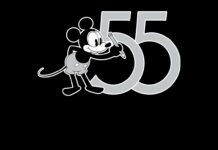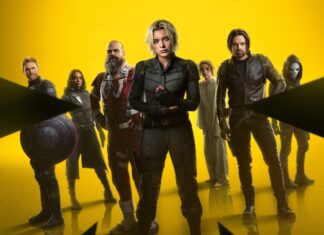This post contains affiliate links and our team will be compensated if you make a purchase after clicking on the links.

Over three years ago, rumors began circulating of a new version of Disney’s 1959 classic “Sleeping Beauty,” to be directed by Tim Burton and starring Angelina Jolie as Maleficent. And while Burton’s director spot never came to fruition, “Maleficent” was officially announced in early 2012 with Jolie as the title character. While the casting choice seemed perfect, the idea of the movie was met with skepticism. Just what type of direction was this movie going to take? Would it simply be a live-action retelling of the original from Maleficent’s point of view? Or would it expand upon the story in the way that “Alice In Wonderland” did? After many months of shooting, news broke that Disney had hired director John Lee Hancock (“Saving Mr. Banks”) to oversee a series of reshoots. This was not a good sign, and fans grew even more worrisome. According to producer Joe Roth, the opening of the film required some reworking. In his exact words, “The movie is gorgeous to look at, and the last 75 minutes are really entertaining. The issue is the opening, which is being re-shot over eight days.” Make sure to remember this quote.
After some publicity shots that only hinted at Jolie’s look, audiences were finally given their first teaser trailer towards the end of 2013. It showed dazzling, dark visuals and was capped off with Maleficent’s signature evil laugh. “This shows some promise,” I thought to myself. A few months later during the Academy Awards®, Disney released a bold new teaser featuring Lana Del Rey’s haunting rendition of “Once Upon A Dream.” Wow, I was floored. This type of marketing was very uncharacteristically Disney. The footage displayed Maleficent on the battlefield, facing off against the royal troops with her army of nightmarish creatures from beyond the woods. My hopes were much higher than I anticipated. It looked as though a similar approach to “Snow White And The Huntsman” was being taken, going for a much more scary and adult tone. After seeing the extended (and immersive) first look for the film at Disney California Adventure, I was sold.
I wish at this point that I could say the film lived up to my expectations. But unfortunately that is not true. In fact, it fell so far below what I was expecting that I am still a bit dumbfounded. As a lifelong Disney fan, this film seemed like a no-brainer. The original “Sleeping Beauty” had all of the necessary components laid out. The villain, the hero, and the helpless victim caught in the middle. All it needed was a little backstory and explanation as to why Maleficent became so evil. The film does this, but unfortunately it leads the rest of the plot into directions I would not have expected. And not in a good way.
“Maleficent” stars Academy Award® winner Angelina Jolie as the title character. The film co-stars Elle Fanning (“Super 8”) as Princess Aurora; Sharlto Copley (“District 9”) as King Stefan; Sam Riley as Diaval; Imelda Staunton (“Harry Potter” series) as Knotgrass; Juno Temple as Thistlewit; Lesley Manville as Flittle; and Brenton Thwaites as Phillip. The film was directed by two-time Academy Award® winner Robert Stromberg (Best Art Direction on “Avatar” and “Alice In Wonderland.”)
While I typically like to cover the positives before the negatives in my other reviews, I feel it is only appropriate to do the opposite here.
WHAT DID NOT WORK: Where do I begin? While some of the most basic plot points of “Sleeping Beauty” are barely intact, it seems as though someone felt it was necessary to rewrite everything that connected these points together. To me, this does not lend to a successful reimagining of a classic fairytale. While 2012’s “Snow White And The Huntsmen” was far from perfect, it kept the overall story arc in place. The Evil Queen was portrayed as really evil. And the result of the film was basically the same. But with “Maleficent,” a dramatic shift in character development and story outcome was created at liberty for no reason at all other than to make the movie different from its predecessor. This was completely unnecessary for this film to be successful. In fact by doing so, I feel it is going to turn audiences off. It also negates all of the marketing that has been done for the film, which appeared to do Maleficent some justice in making her truly wicked. With the initial backstory presented, the film could have easily progressed along the same lines as the original story with a stronger focus on Maleficent’s hatred, leading to what could have been an incredible climax to the film. Because while people root for the hero, sometimes we actually root for the villain. And Maleficent’s level of evil, if presented with just cause, is one that audiences could get behind.
It only became more and more apparent as the film went on that everything I expected and hoped to see was not going to happen. This incredible battle between Maleficent and the royal army that was shown in the trailers, which I fully expected to be at the end of the film, was in fact part of the backstory shown at the very beginning. After the christening of baby Aurora and Maleficent lays the curse in place, her character gradually changes from that of antagonist to protagonist, as she eventually has a catharsis. All of the negativity and hatred is funneled to King Stefan instead, as he focuses his entire life on killing Maleficent and stopping the curse from coming true. Portrayed very poorly by the overrated Sharlto Copley, Stefan is one of the most confusing characters in the entire film. A once poor and innocent boy now turned malicious and focused on power, his development makes no sense. The only purpose is to give Maleficent a reason for which to display her powers and seek retribution.
Speaking of powers, since the film has an entire land full of magical creatures where Maleficent grew up, we are forced to suffer with three utterly useless fairies: Knotgrass, Thistlewit and Flittle. Unlike “Sleeping Beauty’s” Flora, Fauna and Merryweather, the obnoxious substitute characters we are introduced to have no impact on the story whatsoever. In fact, for the 16 years in which they were supposed to be looking after Aurora to protect her, they are barely ever seen. What were they doing all this time that Aurora was running off into the Moors? It is a rhetorical question, but one that needs asking. Did they serve any real purpose in this story? No. And the same can be said for Prince Phillip, who is practically non-existent from the film. Yes, you read that correctly. The hero from the original story is basically an afterthought in “Maleficent.”
WHAT “SORT OF” WORKED: Angelina Jolie was perfect as Maleficent, but it is unfortunate that she had to play her in these circumstances. I wanted to see her character lose it. Her laugh and devilish grin were spot on. The over the shoulder looks she gave displayed power and confidence. I was eagerly anticipating her transformation into the dragon for a final showdown. Yet slowly, her thirst for retribution fades and the calmly sinister Maleficent that we grew up knowing in “Sleeping Beauty” turns out to be wasted in favor of forgiveness. Elle Fanning was acceptable as Aurora (and age appropriate), but barely utilized in the film. She was not given much to work with.
WHAT WORKED: Despite the film’s overwhelming issues, it excelled on the technical front. The visual effects and sound were impressive, and the art direction and costume design were strong. I also enjoyed the score by eight-time Oscar® nominee James Newton Howard, whose work is consistently good.
FINAL THOUGHTS: Every opportunity to make “Maleficent” a modern and ultimately badass retelling was missed. The films suffers from an identity crisis, bouncing back and forth between whether it wants to be scary or wants to be family-friendly. Ultimately, the result is disappointing. I wanted this film to be good, and I expected so much more. But I cannot deny how let-down I felt after leaving. Remember the quote from producer Joe Roth at the beginning? “The last 75 minutes are really entertaining.” This film is only 97 minutes long, so that last part he referred to was basically the entire film. And in fact, he had it backwards. The film peaks 30 minutes in and then it is all downhill from there. While I understand Disney’s attempts to change the perspective for a new experience, that does not warrant completely rewriting the story in the process and labeling it as the “true version”. It would be as if we saw “The Lion King” from Scar’s perspective, learned why his character hated Mufasa through childhood backstory, then watched as Scar killed Mufasa and happily adopted Simba as his own son. I mean seriously…would that type of drastic shift in plot be something audiences would want to see? I do not think so
OVERALL SCORE: 4.5/10
[review]
Discover more from Socalthrills.com
Subscribe to get the latest posts sent to your email.











